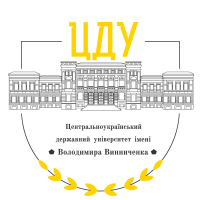INTER-LINGUISTIC HOMONYMY IN THE INDIVIDUAL RESEARCH WORK OF THE STUDENT MAJORING IN TECHNOLOGY
Keywords:
foreign languages, scientific research, student, inter-linguistic homonymy, translation, lexis, grammar.Abstract
The author of this article based her work on the materials of integrate scientific researches in the field of professional communication lexicology, accomplished by teachers and students of the department of foreign languages for specific purposes at National University of Food Technologies (Kyiv). What was taken into consideration for these studies was the specific terminology of technological, technical, and economical specialties majored at NUFT. Firstly, the inter-linguistic homonymy was affirmed as the lexical massif requiring the special attention in translation of professionally oriented texts (whenever the words from different languages are spelt or pronounced approximately the same way) in order not to allow confusing the homonymic terms and, furthermore, distorting the content of the initial text. Secondly, the main rules of using the indicated words in communication were displayed (for instance, referring to different dictionaries; combining the dubious lexemes in a logically coherent sentence as a didactic method; searching for the meanings of frequently confused words in the context of literary works, mostly poems and song lyrics thanks to their meter and rhyme as the mnemonic factors). Finally, the importance of juxtaposition methods in studying the homonyms in various languages, aimed to help the students of nonphilological high schools develop their skills of individual scientific research work, was established, with additional substantiation by the lists of homonyms created by both teachers and students. What is more, such a list can include the examples of inter-linguistic homonyms borrowed from other fields of sciences as well as from various languages, besides English, which would be quite a convincing evidence of the students’ versatile experience attained during their studies at NUFT.
References
Андрусяк І. Дуби і леви: збірка есеїв. Київ: Грані-Т, 2009. – 168 с.
Білецький А. О. Про мову і мовознавство: навч. посібник. Київ: АртЕк, 1997. – 223 с.
Большой иллюстрированный словарь иностранных слов: 17 000 сл. Москва: ООО «Издательство АСТ», 2002. – 960 с.
Грабовський П. А. Московські переклади творів Шевченкових. Про літературу. Київ: ДВХЛ, 1954. – С. 78–93.
Кочерган М. П. Вступ до мовознавства: підручник. Київ: ВЦ «Академія», 2000. – 368 с.
Лебединская Б. Я. Английская грамматика в стихах: пособие по английскому языку. Москва: АСТ, 2006. – 20 с.
Науменко Н. В., Галузинська Л. І., Колосюк В. О. Ділове спілкування: курс лекцій для студентів спеціальності «Готельно-ресторанна справа». Київ: НУХТ, 2010. – 111 с.
Пономарів О. Д. Культура слова: Мовностилістичні поради. Київ: Либідь, 2001. – 240 с.
Ткаченко А. О. Ой у полі вербалізація, а під нею глобалізація… Науковий збірник на пошану професора Н.М. Шляхової. Одеса: Астропринт, 2008. – С. 204–216.
Циткина Ф. А. Терминология и перевод (К основам сопоставительного исследования). Львов: Высшая школа, 1988. – 157 с.
Чуковский К. И. Высокое искусство. Принципы художественного перевода. Санкт-Петербург: Авалон; Азбука-Классика, 2008. – 448 с. 12. Кормилицын С. В. Голый проводник под вагоном и прочие прелести. URL: https://serh.livejournal.com/275684.html (дата звернення 25.10.2020).








